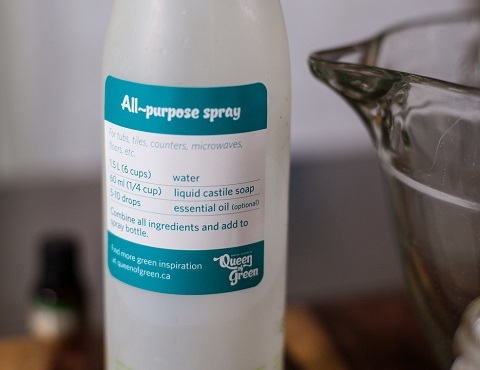How to make all-purpose spray cleaner

Keep a bottle under the kitchen and bathroom sinks, in the cleaning closet, etc. (Credit:
Most of us are exposed to cleaning products and their residues every day.
Some contain harmful chemicals linked to cancer, reproductive disorders, asthma and severe allergies. Symbols, like the skull and crossbones, warn us about acute hazards. Labels include words such as "poison," "corrosive" or "irritant."
But Canada does not require warnings about chronic health and environmental hazards of chemicals in cleaning products.
I can't tell you all ingredients to avoid, because product manufactures aren't required to disclose them. Some manufacturers disclose them voluntarily.
Read labels. Avoid these when shopping for store-bought products:
Scented cleaners which may contain synthetic "fragrance" or "parfum"
Anti-bacterial cleaners which may contain "triclosan"
Coloured cleaners which may contain dyes
Better still, make your own!
All-purpose spray recipe
Time needed: five minutes
Shelf life: approximately six months
1.5 L (6 cups) water
60 ml (¼ cup) liquid castile soap
5-10 drops (optional) essential oils, e.g., thyme
Combine all ingredients in a big bowl or jug. Stir and pour into labelled spray bottle(s). (This is a massive batch. I keep a bottle under the kitchen and bathroom sinks, in the cleaning closet, etc.)
Note: Choose liquid castile soap that does not contain palm oil. You can also use liquid castile soap that already contains organic essential oils.
Which essential oils are best?
Thyme is powerful at inhibiting bacterial growth. You can also try lavender, lemon, lime, patchouli and tea tree essential oils. Those with anti-fungal properties include cedarwood, lavender, lemongrass, rosemary and tea tree.
How have you used this recipe? Share your review in the comments below.
Sincerely,
Lindsay Coulter, a fellow Queen of Green
Hey! Want more DSF? Join David Suzuki on Facebook

David Suzuki's Blog
- David Suzuki's profile
- 247 followers



